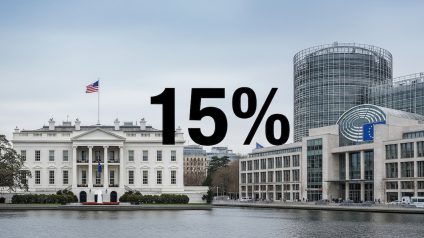Energy investments are heading toward a new all-time high, driven by low-emission technologies. But spending patterns remain deeply uneven worldwide, and many developing economies struggle to mobilize capital.

The 10th edition of the IEA’s World Energy Investment report
Despite global economic uncertainty and geopolitical tensions, energy sector financing continues its upward trajectory. According to the latest data from the International Energy Agency (IEA), energy investments are set to reach a new all-time high in 2025.
By the end of the year, total capital flows are projected to reach $3.3 trillion, marking a 2% real-term increase over 2024. These figures come from the 10th edition of the IEA’s annual World Energy Investment report, which analyzes how investors evaluate risks and opportunities across fuel and electricity supply chains, critical minerals, efficiency, and R&D.
Clean energy surges ahead of fossil fuel tech
The report highlights key trends in today’s energy finance landscape, confirming a persistent shift toward clean technologies. Of the more than $3 trillion in total projected investments, around $2.2 trillion will go toward renewable energy, nuclear, grids, storage, low-emission fuels, efficiency, and electrification, more than double the amount allocated to oil, gas, and coal combined.
This shift has deep roots. Post-pandemic recovery spending significantly accelerated the energy transition, driven not only by climate concerns but also by economic and energy security motivations. Since 2020, low-emission energy production investments have nearly doubled, led by solar, currently the cheapest and fastest-growing energy technology.
“Investments in solar, both utility-scale and rooftop, are expected to reach $450 billion in 2025, making it the single largest component in global energy investment,” notes the IEA.
Pricing dynamics behind energy investments 2025
A major factor fueling this growth is the plummeting cost of clean energy technologies. The IEA’s Clean Energy Equipment Price Index hit a record low in early 2024, down 60% from a decade ago. Since 2022, Chinese solar panel and wind turbine prices have dropped by 60% and 50%, respectively. By contrast, wind turbine prices in Europe have gone up.
Not all segments are experiencing price drops. For instance, inflationary pressures on grid materials have caused prices to double in just five years.
The global energy investment map
Another key insight from the IEA report is the geographic shift in global energy investments. China remains the world’s largest energy investor in 2025, with a projected total of $884 billion, $627 billion of which is dedicated to clean energy.
The United States follows with $587 billion in energy investments, while the European Union is set to invest $386 billion in clean energy initiatives.
Meanwhile, upstream oil and gas spending is increasingly concentrated in low-cost producers across the Middle East. The region is expected to account for 20% of global upstream investments in 2025, its highest share on record.
Yet, global disparities remain. Many developing economies still struggle to attract capital for energy infrastructure. Africa, for instance, hosts 20% of the global population and shows strong energy demand growth, but it accounts for just 2% of global clean energy investments.

Key investment trends for 2025
As previously noted, clean energy, especially renewables, is attracting the bulk of capital. This year alone, $780 billion is expected to flow into renewables worldwide. Energy efficiency and end-use electrification follow with $773 billion, while grid and storage infrastructure will receive $479 billion.
Nuclear power is also making a comeback, with investment rising 50% over the past five years. In 2025, spending on new plants and refurbishments is expected to exceed $70 billion.
Gas-fired power plants are also regaining traction, with the U.S. and Middle East leading in final investment decisions. Investments in new LNG facilities are rising too, driven by new projects in the U.S., Qatar, and Canada.
Conversely, the upstream oil sector is set for a 6% drop in investments in 2025, the first decline since 2020 and the largest since 2016, due to falling oil prices and shifting demand expectations.
Despite some delays, hydrogen investments are expected to double compared to 2024. Meanwhile, coal supply investments are set to rise by 4%, driven mainly by activity in China and India.












